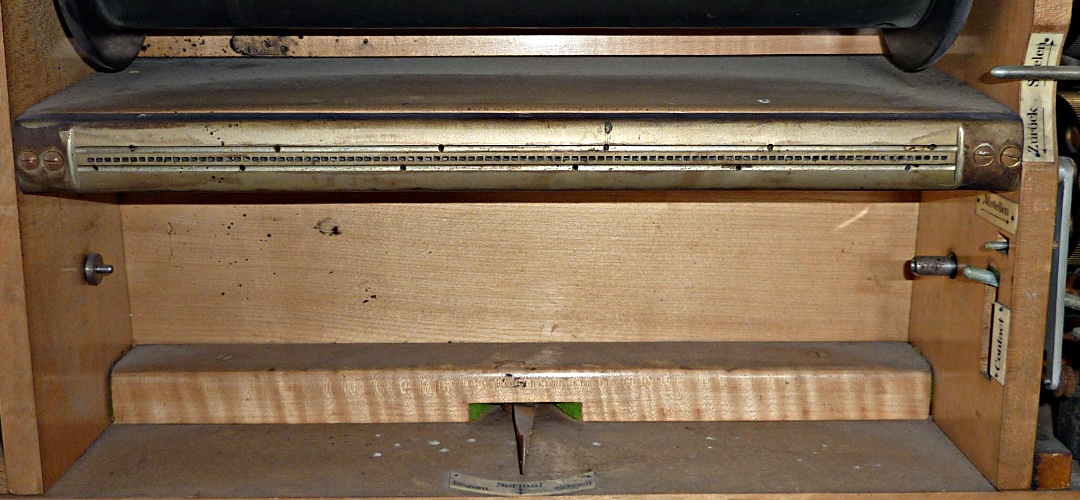The T100 scale by M. Welte & Söhne (Freiburg) was the first reproduction system of its kind and caused a sensation in 1904/1905 that was unlike any other in the world. 80 notes are played, 20 holes are used for the complex intonation control. "Red" or "green" was derived from the characteristic colour of the music roll paper - this was mostly red for the T100 rolls - and mostly green for the T98 rolls. However, rolls of the other format were also produced in other paper colours.
The allocation of the 100 holes of the Welte T100 (red) scale is:
Hole 1: Bass mezzoforte from
Hole two: Bass Mezzoforte on
Hole 3: Bass Crescendo piano
Hole 4: Bass crescendo forte
Hole 5: Bass Sforzando Piano
Hole 6: Bass Sforzando Forte
Hole 7: Piano pedal (left pedal) off
Hole 8: Piano pedal (left pedal) on
Hole 9: resistance high (less suction air supply)
Hole 10: resistance small (more suction air supply)
Hole 11-90: 80 notes from C1 to g4
Hole 91: Return
Hole 92: without allocation
Hole 93: Fortepedal (right pedal) on
Hole 94: Fortepedal (right pedal) off
Hole 95: Sforzando Forte treble
Hole 96: treble Sforzando Piano
Hole 97: treble crescendo forte
Hole 98: treble crescendo piano
Hole 99: treble mezzoforte in
Hole 100: treble mezzoforte from
Most of the pictures were taken for the Welte red system - for the Welte green scale, which was only introduced in 1924, the existing Welte T100 (red) pictures were recoded into the smaller roll format and re-punched.


